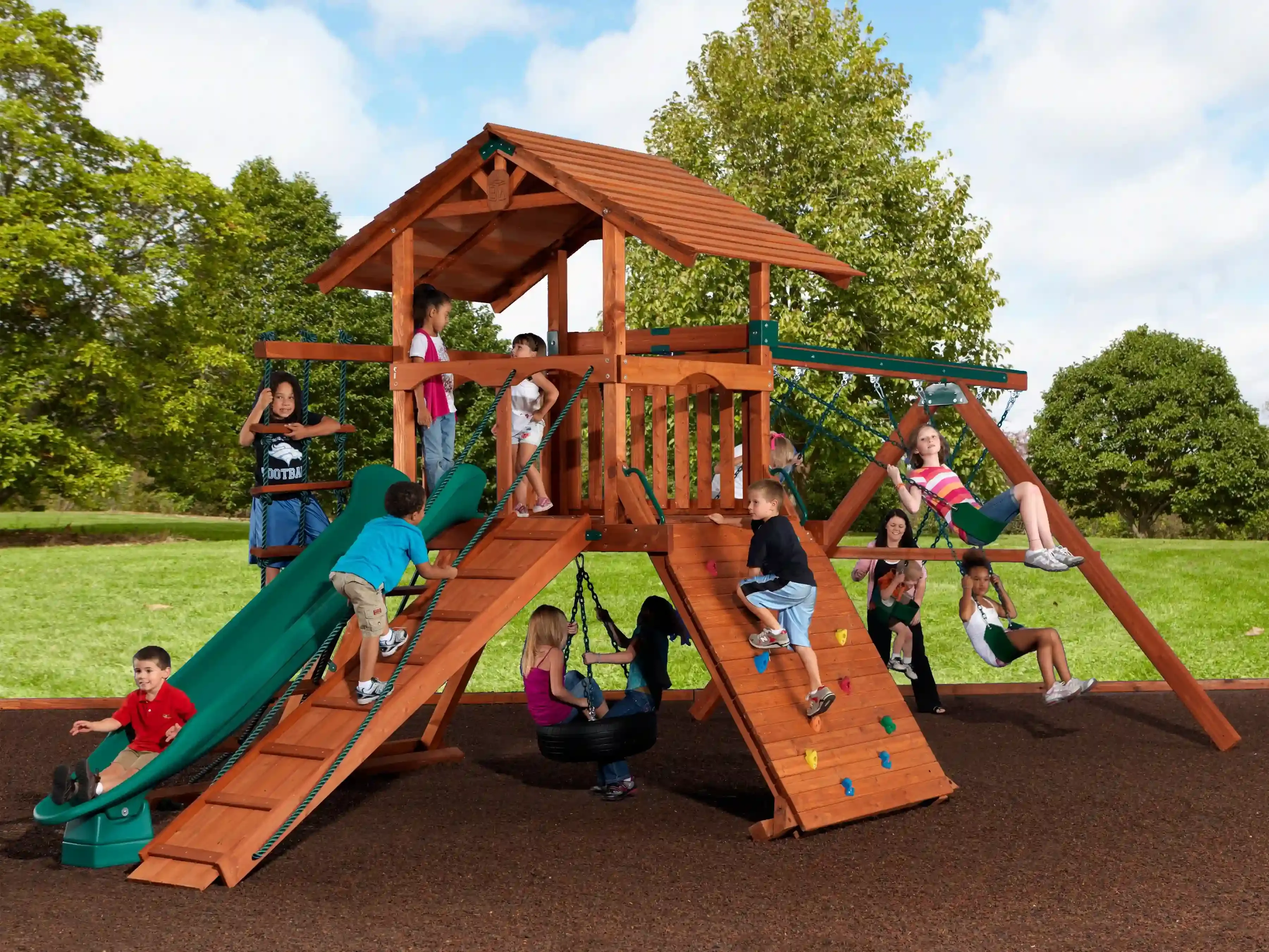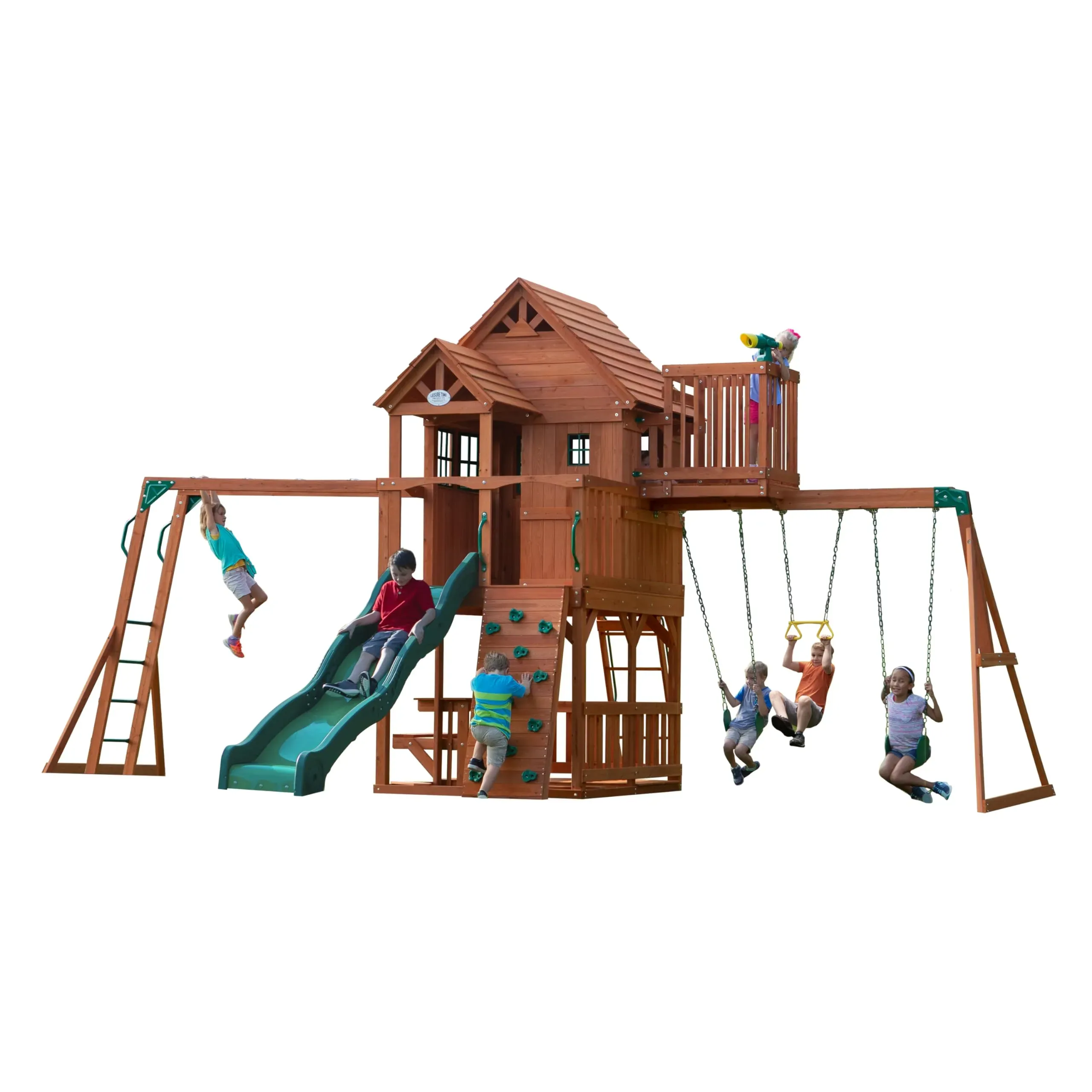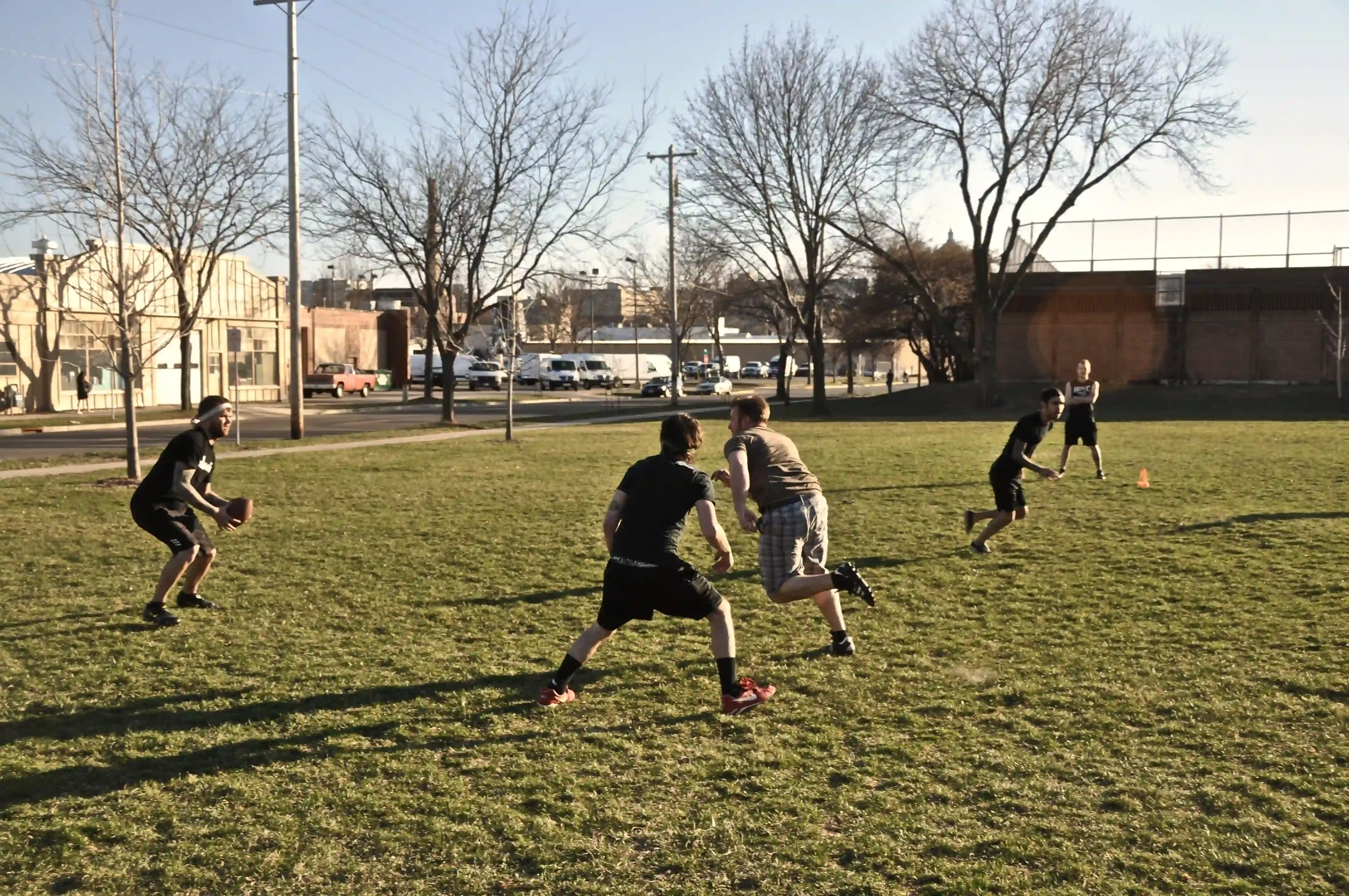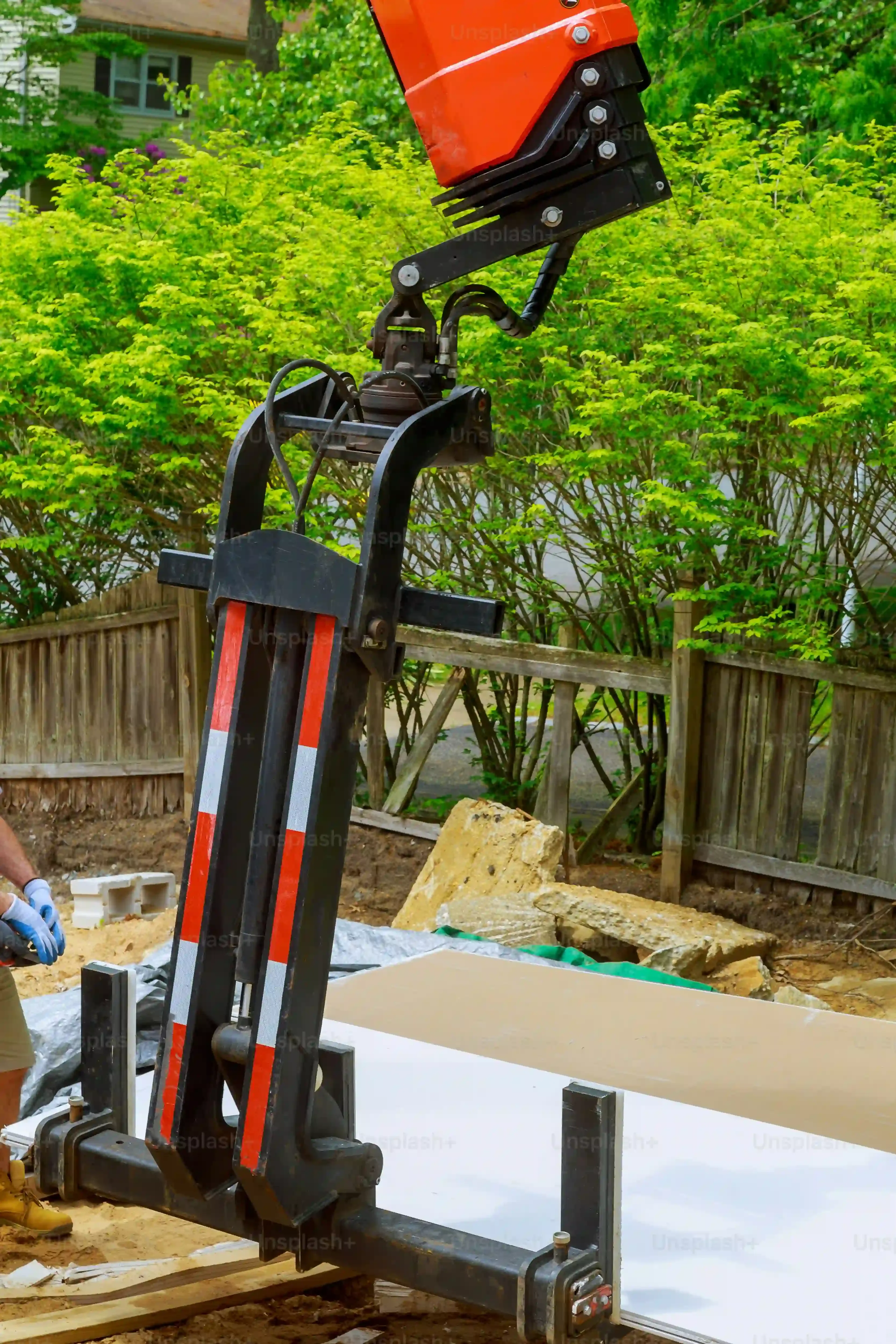Table of Contents
Tired of hearing "I'm bored!" the second screen time runs out? Or maybe you're eyeing that patch of grass and thinking, "Could this be more than just... grass?" If the goal is to get kids moving, burning off some of that relentless energy, and maybe even giving you five minutes of peace, then thinking about backyard play equipment is probably on your mind. It's more than just swings and slides these days; it's about creating a space where imagination takes over and scraped knees are badges of honor, not reasons for panic. But wading through the options, thinking about safety, and figuring out what fits your space and budget? That can feel like navigating a jungle gym blindfolded. This article cuts through the noise. We'll talk types of backyard play equipment, how to pick the right gear for your specific little humans, how to keep it safe, and importantly, how to make sure it lasts. Stick around, and let's turn that yard into the neighborhood hotspot (for the under-10 crowd, anyway).
Essential Types of Backyard Play Equipment

Essential Types of Backyard Play Equipment
The Classic Swing Set: Still Kicking
When you picture backyard play equipment, chances are a swing set pops into your head first. And for good reason. They've been around forever because, frankly, they work. A simple A-frame with a couple of belt swings offers timeless fun. Kids learn coordination, take turns (eventually), and experience that simple thrill of soaring high. You can find them in metal, which is sturdy but can get hot, or wood, which blends in better but requires more upkeep. Some even come with glider swings or infant swings you can swap out. It’s the baseline, the bread-and-butter of getting kids outside and moving.
Playsets: The All-In-One Adventure
Then you step up to the full playset. This is where backyard play equipment gets serious. We're talking elevated decks, slides (wavy, tube, straight), climbing walls, monkey bars, and sometimes even sandboxes or built-in picnic tables underneath. These are designed to pack a lot of activity into one footprint, catering to different ages and interests simultaneously. Think of it as a mini playground delivered to your door. They are a bigger investment, take up more space, and assembly can test even the most patient among us, but the potential for imaginative play and physical challenge is significantly higher.
- Swing sets: Simple, classic, space-efficient.
- Playsets: Multi-activity centers, higher engagement, larger footprint.
- Climbers: Ropes, domes, or walls for building strength and coordination.
- Playhouses: Encourage imaginative role-playing.
- Sandboxes/Water Tables: Sensory play heaven for younger kids.
Picking the Perfect Backyard Play Equipment for Your Crew

Picking the Perfect Backyard Play Equipment for Your Crew
Alright, so you've seen the basics – swings, slides, the whole nine yards of backyard play equipment. Now comes the slightly trickier part: figuring out what actually makes sense for your specific situation. It’s easy to get swept up in the glossy pictures of elaborate setups, but you need to get real about a few things before you drop a chunk of change. How old are the kids using it? A toddler needs something way different than a ten-year-old action hero. What kind of space are you working with? That monster playset might look cool, but not if it eats your entire yard and sits three feet from the fence. And yeah, the budget – backyard play equipment runs the gamut from a hundred bucks for a basic swing set to thousands for a custom job. Don't forget to think about what your kids actually *like* doing. Are they climbers, swingers, or are they more into imaginative role-playing? Matching the equipment to their interests is key, unless you want it to become an expensive clothesline holder.
NonNegotiable Safety for Your Backyard Play Equipment
so you've picked out the shiny new swing set or the sprawling playset – exciting stuff. But before the kids even think about climbing aboard, let's talk about the absolute non-negotiable safety for your backyard play equipment. This isn't the fun part, but it's the most critical. You can have the most amazing setup in the world, but if a bolt is loose or the ground underneath is hard as concrete, you're asking for trouble. Think about where you're putting this thing; it needs clearance – no fences, trees, or clotheslines too close. The ground surface is paramount. Grass looks nice, sure, but it offers zero cushion. You need something soft underfoot – wood chips, mulch, sand, or those specialized rubber mats. Enough depth is key, too, usually 9-12 inches depending on the fall height of the equipment. And once it's up, regular checks are mandatory. We're talking checking bolts, looking for cracks in wood or rust on metal, ensuring swings are securely attached. Skipping these steps is like buying a car and never checking the brakes – eventually, something bad is going to happen.
Maintaining Your Investment in Backyard Play Equipment

Maintaining Your Investment in Backyard Play Equipment
Keep It Clean and Check It Often
So you dropped a good chunk of change on this backyard play equipment, right? You want it to last longer than a single summer. The absolute baseline for maintaining your investment is simple: keep it clean and check it constantly. Don't let dirt, leaves, or mysterious sticky spots build up. A quick wash-down with mild soap and water a few times a season goes a long way. More importantly, make a habit of giving the whole structure a once-over regularly. We're talking monthly, maybe even more often during heavy use seasons. Look at every bolt, every screw, every joint. Are they tight? Any wobbly bits? Check ropes for fraying, chains for wear, and plastic parts for cracks. It sounds tedious, but catching a loose bolt before a swing seat detaches mid-flight is kind of important. It’s like checking your car tires – boring, but prevents a major headache.
Address Material-Specific Needs and Seasonal Prep
Different materials need different love. If you've got a wooden playset, think about splinter patrol and weatherproofing. Sanding down rough spots keeps little hands safe, and applying a sealant or stain every couple of years protects against rot and UV damage. Metal sets? Keep an eye out for rust, especially at joints or anywhere paint has chipped. A little wire brushing and touch-up paint can stop rust in its tracks before it compromises the structure. As seasons change, your maintenance needs shift. Before winter hits, maybe take down swings or other removable accessories to protect them from harsh weather. Give everything a thorough cleaning before covering it up. Come spring, do a major inspection before the kids rush back out. Is the ground surface still adequate? Did winter weather loosen anything? Being proactive now saves you from bigger repairs (or worse) later.
- Tighten bolts and screws regularly.
- Clean surfaces with mild soap and water.
- Inspect ropes, chains, and plastic for wear or damage.
- Sand and seal wooden components as needed.
- Check metal parts for rust and touch up paint.
- Remove accessories or cover equipment for winter.
- Inspect thoroughly after winter before use.
Making the Most of Your Backyard Play Space

Making the Most of Your Backyard Play Space
Think Beyond the Footprint: Vertical and Underneath
so you've got the backyard play equipment installed, maybe a swing set or a playset eating up a decent chunk of real estate. The immediate thought is, "Great, that's done." But you can actually squeeze more fun out of that same space by thinking vertically and, believe it or not, *underneath* the structure. That empty area under an elevated playset deck? Perfect for a sandbox if you didn't get one built-in, or just a shaded spot for a picnic table or some sensory bins. Hang a simple tarp or some fabric for a secret hideout. Think about adding climbing elements that go up – maybe a cargo net attached to a sturdy tree branch nearby (if safe and secure, obviously) or even a small climbing wall panel added to the side of a shed. Don't just see the ground square footage the equipment occupies; see the air above and the often-unused spots around and under it. It's about layering the fun.
Integrate Other Elements for Full-Yard Play
Your backyard play equipment shouldn't exist in a vacuum. The real magic happens when you integrate it with other simple elements in your yard to create a whole play landscape. Does your swing set sit near a garden bed? Turn it into a "secret potion" ingredient source (mud pies count). Is there a slight slope? That's a perfect natural slide in winter or a rolling hill in summer. Use stepping stones leading to the playset, creating a little path. Add some large, sturdy logs or rocks for balancing. Set up a simple slackline between two trees. It's about creating connections and opportunities for different types of movement and imaginative scenarios that flow from one area to another. Suddenly, the playset is just one stop on an epic backyard adventure, not the entire destination.
- Add a sandbox or sensory station under elevated structures.
- Hang climbing nets or ropes from sturdy anchor points.
- Create stepping stone paths or balance beams.
- Incorporate natural elements like logs or rocks for climbing/balancing.
- Designate areas for specific games near the equipment.
- Use tarps or fabric to create forts or shaded spots.
Making Your Backyard the Go-To Spot
So, you've navigated the dizzying array of options, weighed the safety specs, and maybe even wrestled with an instruction manual or two. The truth is, setting up the right backyard play equipment isn't just about filling a space; it's about investing in something tangible that gets kids off the couch and into the sunshine. It takes thought – picking what actually gets used, ensuring it won't cause a trip to the ER, and keeping it in decent shape so it lasts longer than a summer. Done right, that patch of grass transforms into a dynamic zone for burning energy, fostering imagination, and maybe, just maybe, buying you a few quiet moments. It's less about creating a perfect, magazine-worthy playground and more about building a practical, safe space that serves its purpose: letting kids be kids, outside.